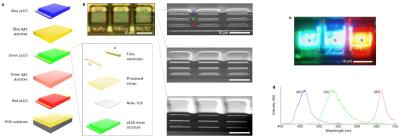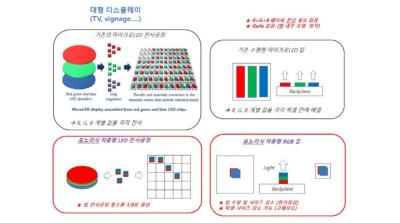Seoul Semiconductor unveils new vertically-stacked WICOP microLED prototypes at Display Week 2023
During Display Week 2023, Seoul Semiconductor demonstrated new prototype display modules that use its WICOP microPixel technology. WICOP Pixel is a full-color one-chip vertically-stacked microLED technology that does not require wire bonding, packaging, or lens, and enables easier microLED display production.
Seoul Semi updates that its latest WICOP Pixels reach a brightness of 10,000 nits (up from 4,000 in its previous generation technology).



